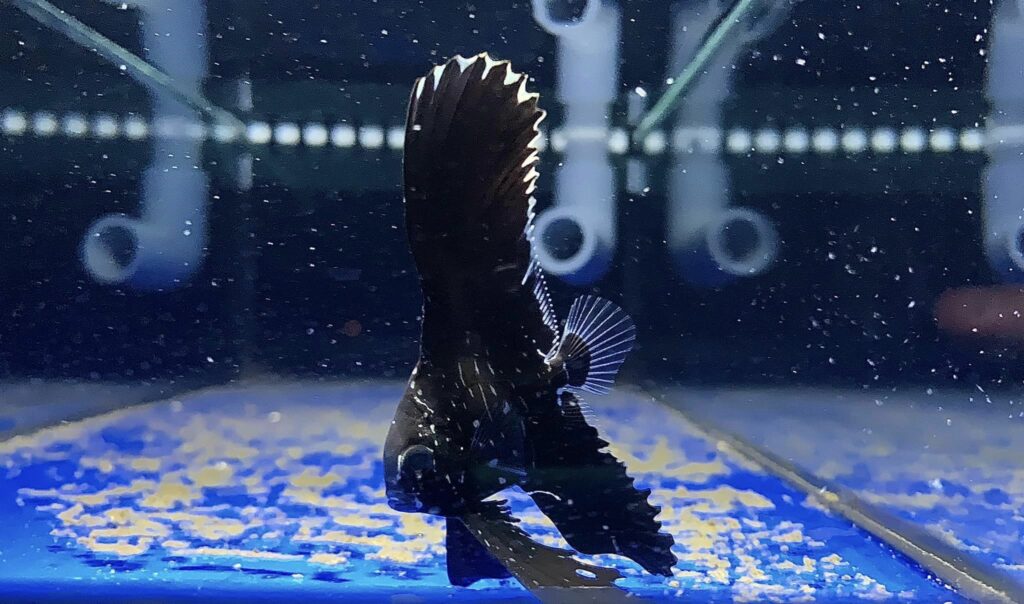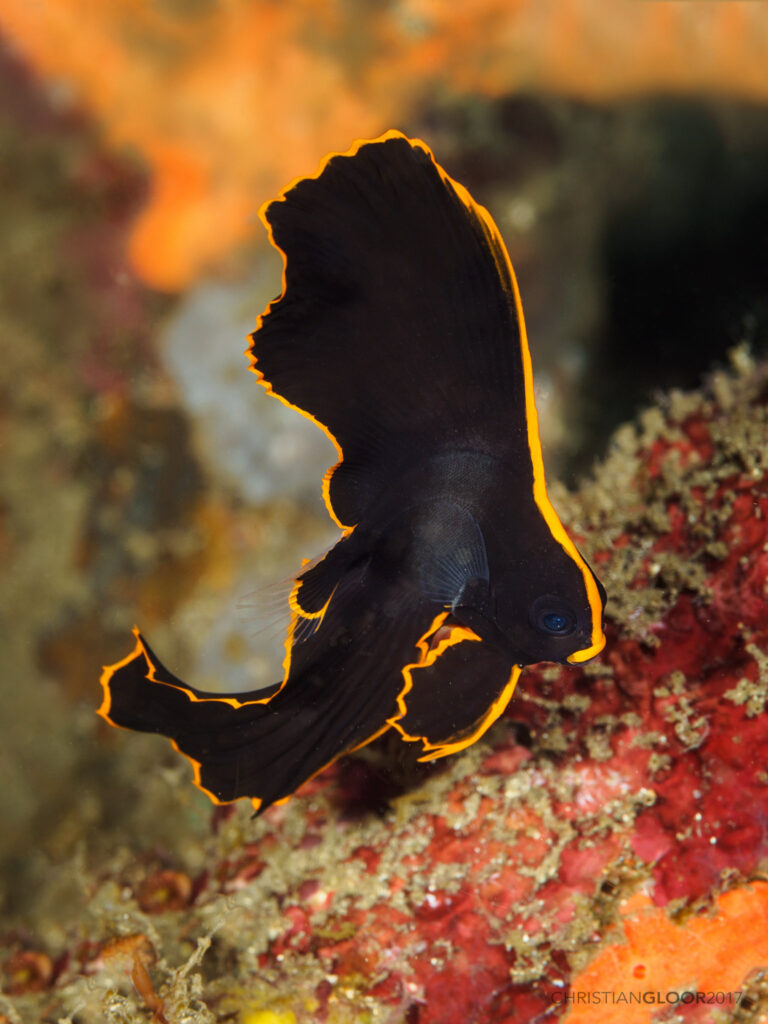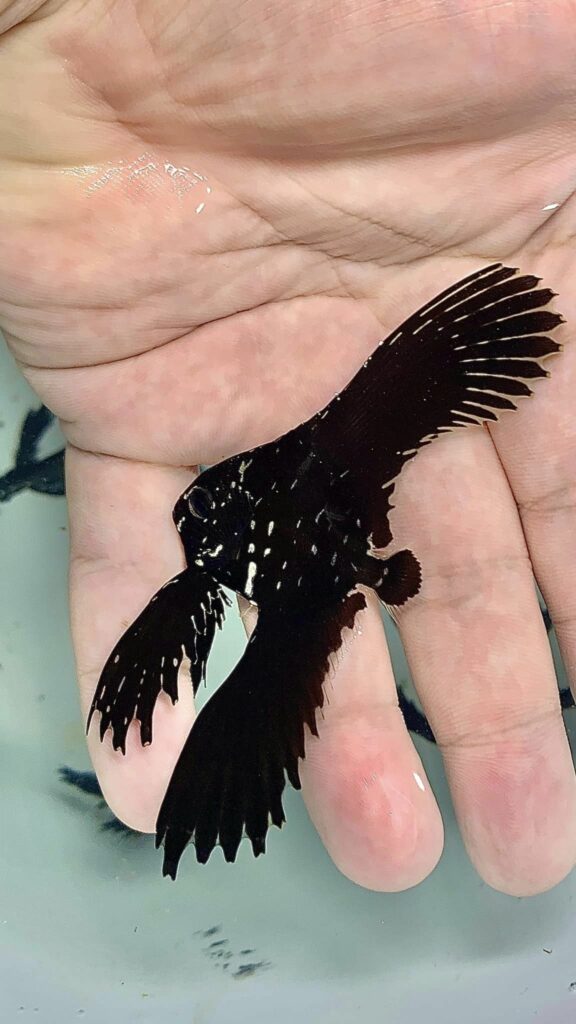
There isn’t a huge market (pun intended) for batfishes (Platax spp.) in the aquarium hobby these days. Of the five recognized species, four are relatively well-known in the aquarium trade (I can’t recall ever seeing the Golden Batfish, Platax boersii, offered here in the U.S.).
While juvenile batfishes are truly adorable, offering interesting coloration and “cute” swimming behavior, this group of species can grow to extreme proportions, leaving some aquarists to consider them irresponsible offerings by the pet trade, likening them to problematic large freshwater species such as pacus, Redtail Catfish, and the occasional Arapaima.
But The Babies Are So Pretty!
The two species with the most attractive juveniles are uncommonly offered. The Zebra Batfish, Platax batavianus, is probably the least encountered. The striking juvenile coloration and extreme finnage are hard to ignore.

Meanwhile, the Pinnate or Pinnatus Batfish, Platax pinnatus, is the most boldly colored member of the genus, at least as a juvenile, and it was highly sought after in years gone by. However, it generally proves a difficult species to keep, being reluctant to feed and prone to disease.

Both species mentioned here have been successfully captive-bred by Bali Aquarich, the powerhouse ornamental marine fish farm located in Bali, Indonesia. When entering the trade as captive-bred, these specimens have proven to be vast improvements in terms of their captive husbandry demands, readily accepting standard marine aquarium diets and care.
While Bali Aquarich is perhaps best known for some extreme designer clownfish varieties and their production of Pomacantids (angelfishes), they are no strangers to pursuing new forms through the practice of hybridization. Recent notable examples include things such as attempts to recreate the Tigerpyge angel, and the introduction of Purple X Yellow Tang hybrids, now carrying the catching “Yurple Tang” moniker.
Meet The Hybrid Batfish
Given the company’s interest in producing hybrid varieties, and their past production of batfishes, it only seems logical that sooner or later, hybrid batfish would make their debut. And now they have. The new hybrid of Platax (batavianus X pinnatus) showed up recently at Singapore’s Iwarna Aquafarm. This hybrid may have entered the U.S. earlier this year via Los Angeles-based Quality Marine, but went unnoticed at the time.
Wen-Ping Su, Bali Aquarich founder, notes that there is a limited supply of these fish at this time and that the farm does not intend to produce more of this hybrid in the future.

Sadly, while these fish offer a unique new look that blends the parental species, it is rather fleeting. As the fish grows out of the juvenile phase, it may prove difficult to differentiate it from either parental species. Why?
Consider The Adults


While adults of the parental species are perhaps not entirely unattractive, they are fish that probably should be measured by their weight, not length! Still, with maximum sizes of 25 inches (65 cm) for the Zebra Batfish, and 18 inches (45 cm) for the Pinnatus, consider that these measurements are more like “diameters” than lengths! We’re talking tanks in the multiple thousands of gallons being necessary when the fish are mature.
Given the similarity of appearance between both species at maturity, it is likely that the hybrid batfish will appear similar as well. Ultimately, the novelty of the hybrid is fleeting. It’s an interesting development, but probably one that need not become routine (as I personally believe that the juveniles of both parental species are more attractive than the hybrid)
As a private, home hobbyist, should you purchase any of these batfish varieties? Only if you’re going into it fully aware of the true long-term care requirements, and are able to provide for the fish. Or maybe resign yourself to cooking it for your family at some point. There are certainly examples of suitable private aquariums to house fishes like these; most that come to mind are large-scale commercial fish-only installations of several thousand gallons.
All this said, public aquariums sometimes house attractive groups of these fishes as adults. With increasing pressure to source their display animals from captive propagation, there is a reason to perhaps occasionally aquaculture batfishes, although they remain suitable primarily for institutional-scale aquariums.




